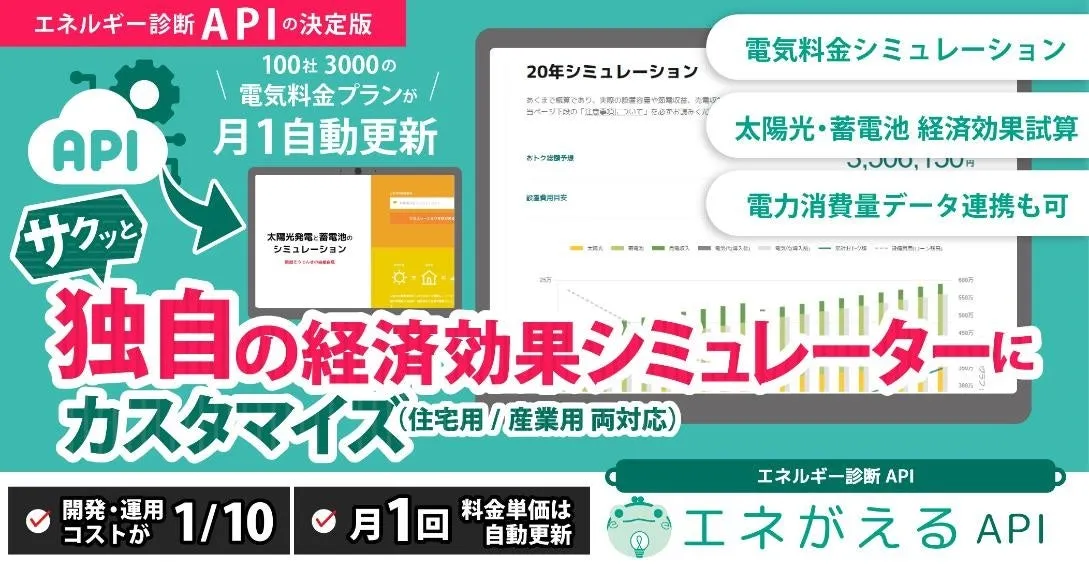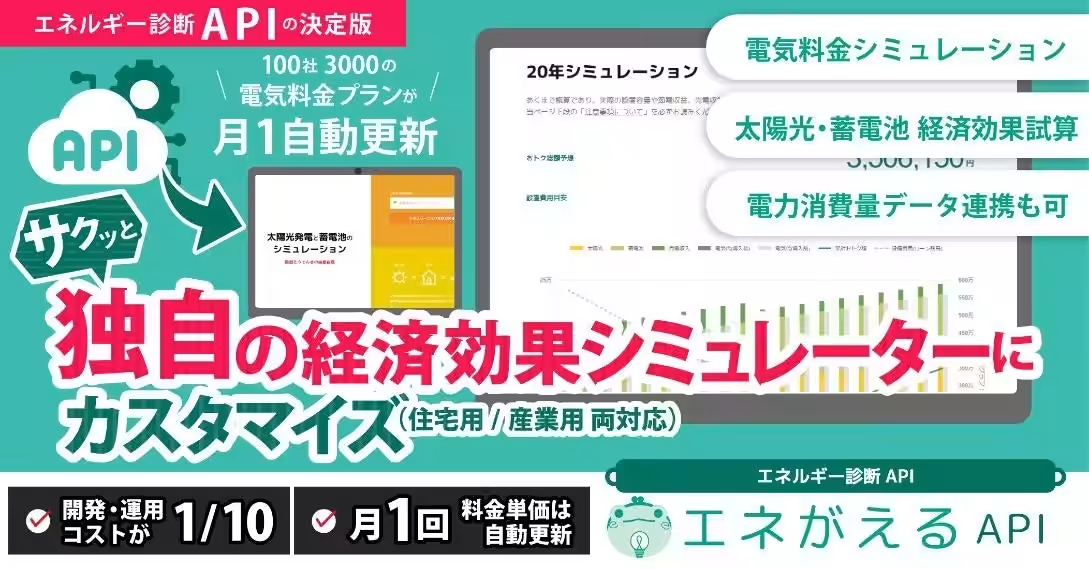

Introducing the Integration of Energy Simulation API into XSOL NAVI by EXSOL
Introduction
In a significant development within the solar energy sector, EXSOL Corporation has announced the adoption of the 'Enegaeru API' from Kokusaikogyo Co., Ltd. into its home and industrial solar power simulation system, XSOL NAVI. This integration promises to revolutionize the efficiency and accuracy of energy calculations for users, providing crucial support for businesses and households alike in their quest for sustainable energy solutions.
Background and Challenges Addressed
EXSOL, a comprehensive solar power company based in Minato, Tokyo, has aimed to create a more efficient solar power simulation system. The transition to a more advanced simulation model has been catalyzed by the introduction of the Enegaeru API. By leveraging this API, the following primary challenges faced by EXSOL have been addressed:
1. Significant Reduction in Simulation Time
Previously, the Excel-based simulation took around two to three hours to complete per calculation, including preparation time. With the new system, this time has been drastically cut down to approximately five to ten minutes, dramatically boosting operational efficiency.
2. Automated Power Plan Information Updates
The integration of the Enegaeru API has alleviated the burden of manual updates for various electricity plans, thereby minimizing human error. The system now ensures access to the latest and most accurate electricity rate data, enhancing the quality of proposals made to clients.
3. Faster Proposal Generation with Virtual Demand
Users can now generate virtual demand data in about thirty seconds by simply entering the industry type and floor area, even without actual demand data, allowing for quicker initial proposals.
Features of XSOL NAVI's Self-Consumption Simulation
EXSOL’s XSOL NAVI integrates several notable features that enhance its usability:
1. High-Speed and High-Precision Simulation
Leveraging the Enegaeru API enables simulations to be completed in about five to ten minutes, even considering demand data generation. This advancement allows for comparative analysis of multiple scenarios, providing clients with optimal solutions.
2. Rapid Initial Proposals with Virtual Demand Mode
By inputting just the industry type and floor area, users can complete demand calculations in approximately thirty seconds, allowing for high-accuracy initial proposals even in the absence of hard data.
3. Automated Report Generation
The system can automatically generate Excel reports displaying self-consumption rates, self-supply rates, and economic effects, streamlining the creation of client proposal materials.
Future Expectations
Currently, the XSOL NAVI self-consumption simulation system is utilized internally, but EXSOL plans to offer it externally in the near future. There is also an initiative to expand its use among sales representatives, fostering an improved overall quality of proposals across the organization.
Statement from EXSOL
A spokesperson from EXSOL commented on the integration, stating, "The adoption of the Enegaeru API has tremendously improved our simulation efficiency. Where we once spent two to three hours on a single simulation, we can now complete it in five to ten minutes, enabling us to consider multiple scenarios for each case. This broadens our proposal scope and allows us to present more optimized solar power systems. Additionally, system usability has improved, allowing more sales staff to leverage it effectively."
About Enegaeru API
The Enegaeru API, developed by Kokusaikogyo, is a specialized B2B SaaS type API that provides energy diagnosis services. It serves various stakeholders, including electricity and gas companies, solar panel and battery manufacturers, trading companies, and local governments, enabling them to conduct economic effect simulations for energy consumption.
For more details about the API, visit this link.
Conclusion
The collaboration between EXSOL and Kokusaikogyo through the integration of the Enegaeru API marks a notable advancement in the solar power simulation landscape. With improved efficiency, accuracy, and ease of use, this initiative underlines the ongoing transformation and innovation in renewable energy technology.



Topics Energy)










【About Using Articles】
You can freely use the title and article content by linking to the page where the article is posted.
※ Images cannot be used.
【About Links】
Links are free to use.